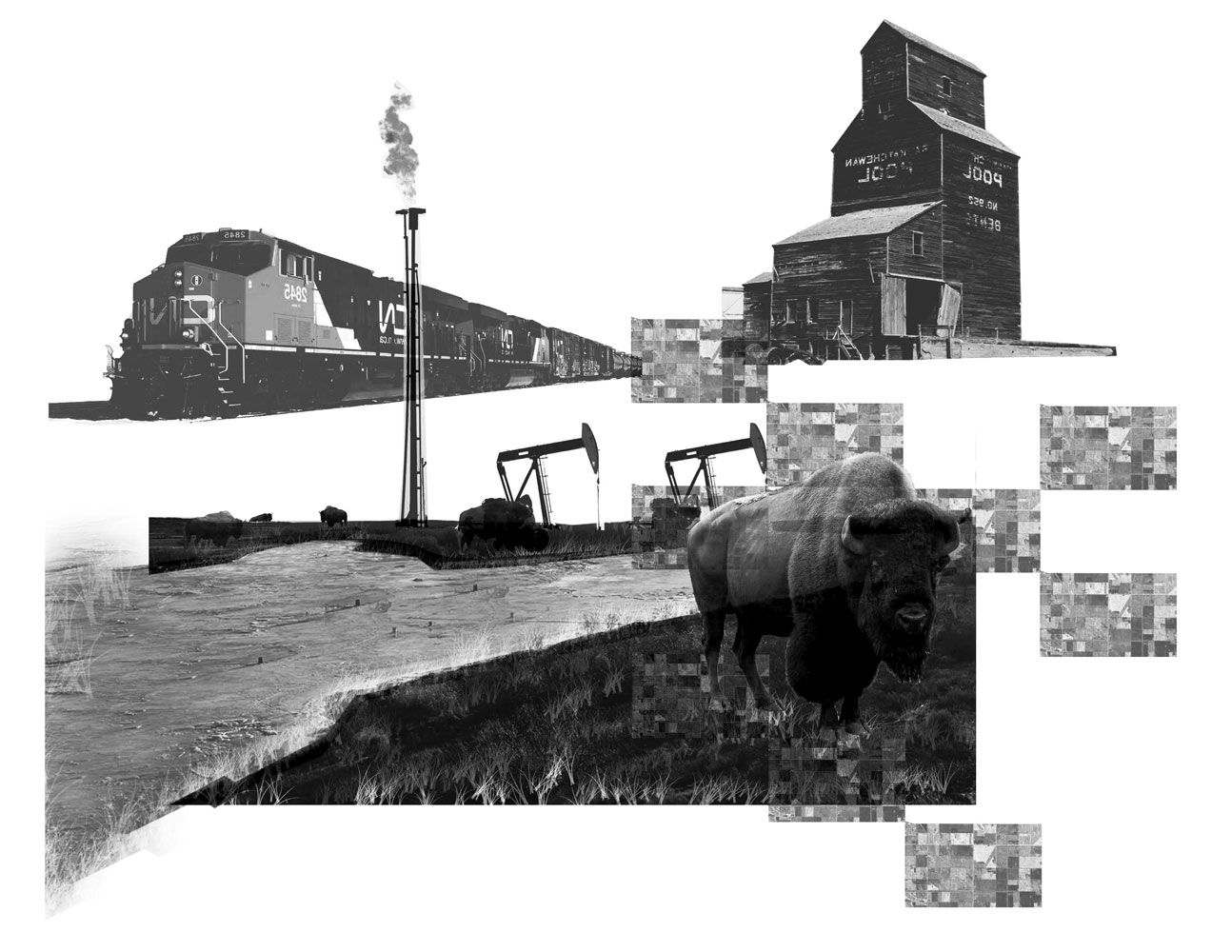Extraction landscapes are the most prominent landscape type in modern prairie ecologies. With only five per cent of grasslands remaining in pre-agricultural and pre-settlement condition, the nostalgia for this untouched ‘hinterland’ landscape is one for a thing that no longer exists.
The idea of hinterland beyond the city-edge is loaded with connotations – unexplored, a back country full of mystery. This concept of the landscape which surrounds us carries dangerous connotations because of its blatant disregard for the indigenous peoples of Canada. There is no landscape in the prairies that is uncharted or unexplored; the First Nations have inhabited this land for thousands of years.
In Canada, it is required that mining companies remediate (return to an undamaged ecological state) the landscape after resource extraction, however a political ecology and desire to set standards and to monitor this remediation has not emerged. The sites are “greened” without thought of healthy ecosystems and ecological strength, offering the quickest and easiest solution to industrialized landscapes. Draglines, for example, will pile up extracted soil in order to encourage water retention so the mounds of land “green up” at a quicker pace. The fabricated hilly landscape, developing forested areas that result bears no relation to the flat, grassy, plains they replace, save that some form of vegetation has returned. The manner in which the petrochemical industry scars the landscape and defamiliarizes it from our historical and cultural understanding is the most blatant example of a process which occurs in all landscapes of extraction.
The prairie functioned as a cohesive ecosystem for thousands of years as an inherently resilient ecological assemblage. European settlement of the prairies saw the hinterland transform from open plains to 90 per cent agricultural and range land. The imposed quarter-section grid of the settlers organized the majority of the landscape into rigid geometries, framing and enclosing the prairie hinterland into fixed hectares of production. Remediation must confront the fact that there can be no return to a virgin state.
The complete annihilation of bison in the Western Canadian landscape, and as a factor in the ecology of that landscape, is one pivotal reason that the nostalgic prairie can never be restored. This illustrates the fundamental flaw in the practice of hinterland preservation in the prairies; the yearning for something no longer possible.
This hinterland, bound to industrialization and urbanization, forgets it’s cultural and ecological heritage. Mining and quarrying move billions of tons of land every year, at a physical and temporal scale far in excess of the slow, steady flow of water, wind, and ice which shaped the plains. With the displacement of land at such vast magnitudes, what then becomes of hinterland? Of the plants, animals, and human ecologies which were an integral part of it?
Approaching resource extraction by treating the hinterland as a provider for global economies isolates the local communities from their land, often excluding them from jobs and wealth associated with the resource industry as well as excluded from use of the physical resource. With extraction of resources increasingly for exports and global use, regionally the benefits of extraction landscapes are rarely reaped.
We should challenge our historically colonial attitude towards landscapes of extraction – at the least, we should think of them as something other than a helpless hinterland, waiting to be returned by us to a vanished past.




